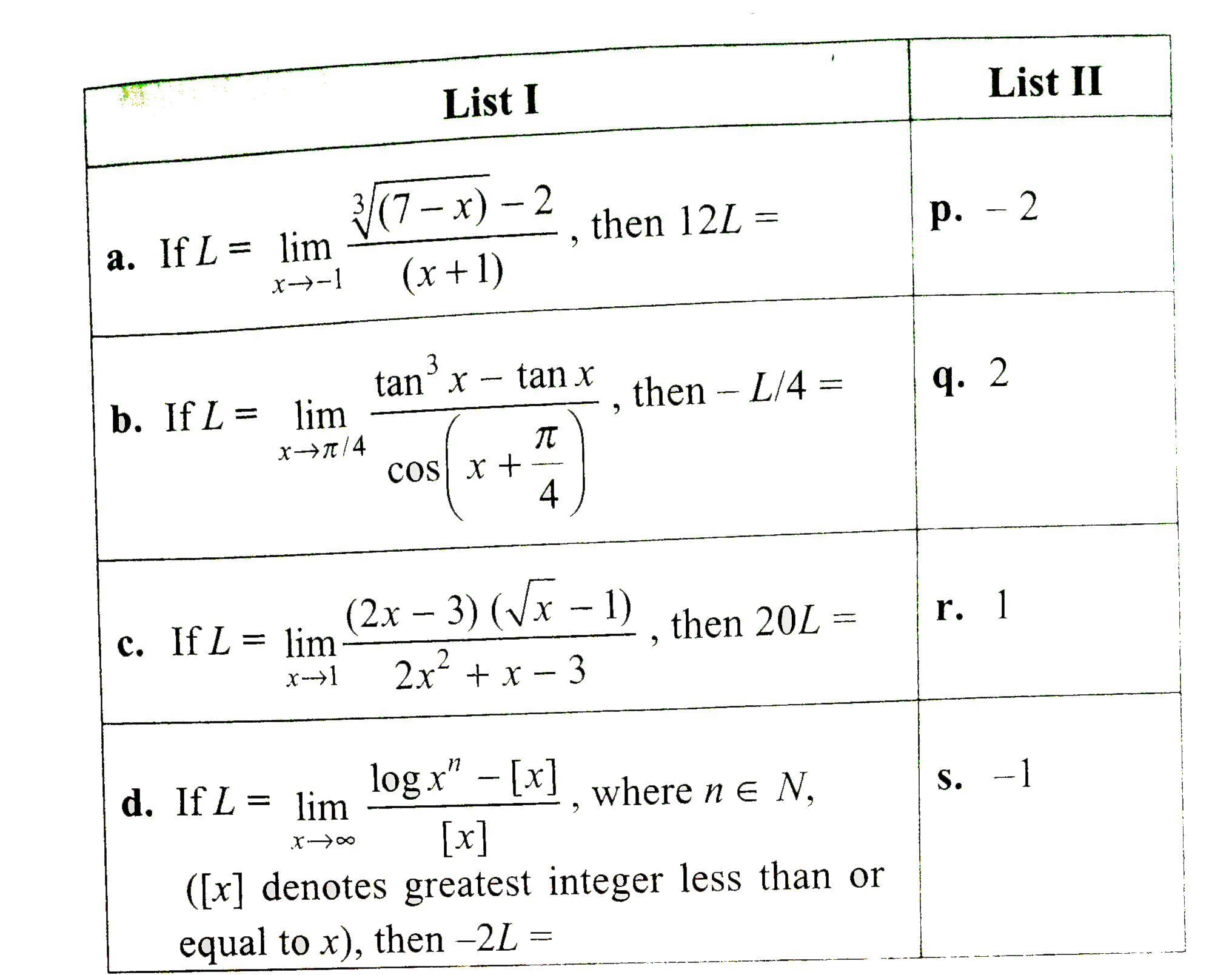Which of the following is true?Solution in Tamil
always 1
always -1
(−1)n−m+1
(−1)n−m
The correct Answer is:A, B, C
limx→∞logex{x}=positive infinitya value between 0 and 1=∞
limx→2+xx2−x−2=limx→2+x(x−2)(x+1)=limh→02+hh(3+h)=∞
limh→−1xx2−x−2=−limh→−1x(x−2)(x+1)
=limh→0−1−h(−3−h)(−h)=−limh→01+h(3+h)(h)=−∞
Topper's Solved these Questions
- BOOK - CENGAGECHAPTER - LIMITSEXERCISE - Exercise (Comprehension)20videos
LIMITS
- BOOK - CENGAGECHAPTER - LIMITSEXERCISE - Exercise (Matrix)5videos
LIMITS
- BOOK - CENGAGECHAPTER - LIMITSEXERCISE - Exercise (Single)76videos
LIMITS
- BOOK - CENGAGECHAPTER - JEE 2019EXERCISE - Chapter 109videos
JEE 2019
- BOOK - CENGAGECHAPTER - LINEAR COMBINATION OF VECTORS, DEPENDENT AND INDEPENDENT VECTORSEXERCISE - DPP 1.210videos
LINEAR COMBINATION OF VECTORS, DEPENDENT AND INDEPENDENT VECTORS
Similar Questions
Find the domain of f(x)=√|x|−{x} (where {⋅} denots the fractional part of x).
02:54View SolutionMatch the following lists:
 02:47View Solution
02:47View Solution(lim)x→0[sin(sgn(x))(sgn(x))], where[.] denotes the greatest integer function, is equal to (a)0 (b) 1 (c) −1 (d) does not exist
03:35View SolutionIf y = y(x) is the solution of the differential equation, xdydx+2y=x2 satisfying y(1) = 1, then y(12) is equal to
02:58View SolutionThe number of integral values of p for which (p+1)ˆi−3ˆj+pˆk,pˆi+(p+1)ˆj−3ˆk and −3ˆi+pˆj+(p+1)ˆk are linearly dependent vectors is q
03:27View SolutionWhich of the following is /are true?
02:20View SolutionWhich of the following is not true for DNA ?
02:47View SolutionWhich of the following statements is /are true ?
02:43View SolutionWhich of the following is true for the bryophytes ?
02:58View SolutionIf p is true and q is false, then which of the following is not true?
01:48View Solutionनिम्न में कौनसा कथन सत्य है ।
05:42View Solutionनिम्न में से कौनसा कथन सत्य हैं ।
05:30View Solutionकेन्द्रक के लिए निम्नलिखित में से कौन सा सही है
03:27View Solutionनिम्नलिखित में से कौनसा कथन सत्य है :
View Solutionनिम्न में से कौनसा कथन सत्य है|
04:12View Solutionनिम्न मे से कौन सा कथन सत्य है।
04:49View Solution

